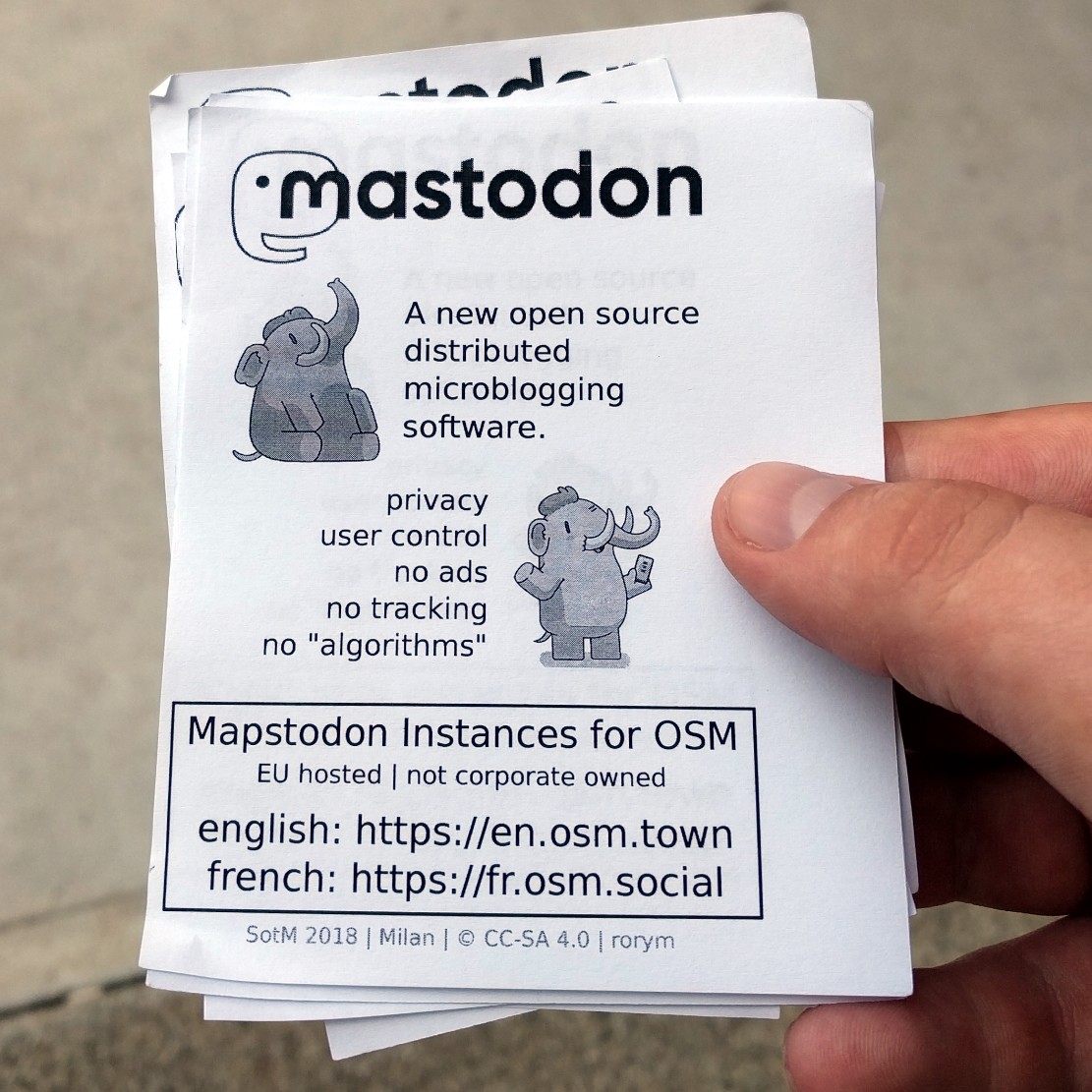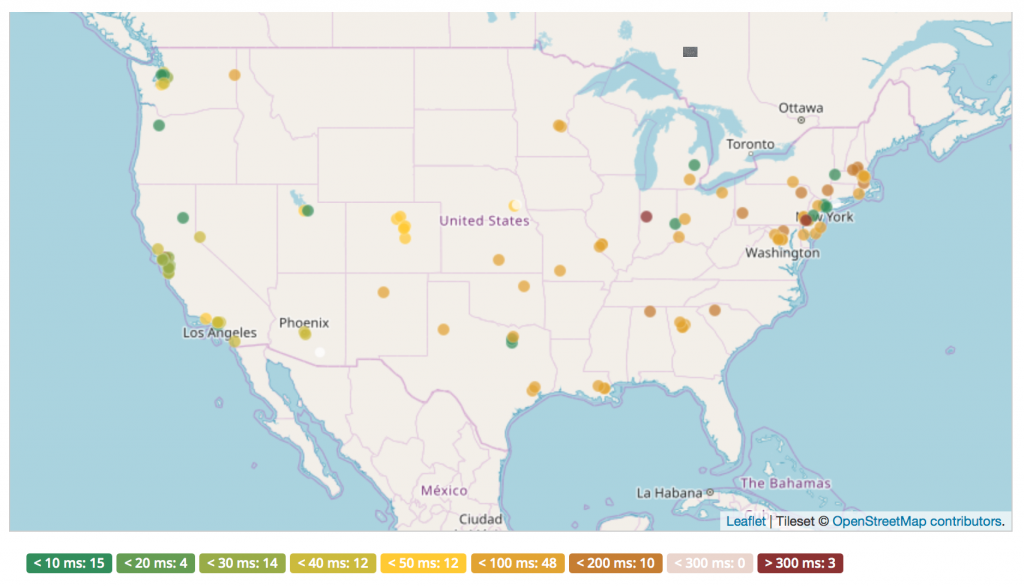
en.osm.town flyer at State of the Map 2018. Photograph by Rory cc-by-sa 4.0
Mastodon is an open source, federated micro-blogging system, with more than a million users. It is similar to Twitter, but open source and spread across many servers. is a new instance/server focused on OpenStreetMap (there’s already fr.osm.social for francophone OSMers). Like email, this server (“instance”) talks to other servers, so anyone on the “fediverse” can follow and interact with anyone on this server & vice versa. The “local timeline” will only show toots (= tweets) from everyone on the server, so will be full of OSM related stuff. The server was set-up by community member Amᵃᵖanda, who we’d like to thank 🙂
Let’s use something open, and under our control! No adverts, no analytics, no “algorithmic” promoted tweets. 500 characters. Let’s connect on mapstodon! Follow us on https://en.osm.town/@openstreetmap
Other official OSM announcement channels:

